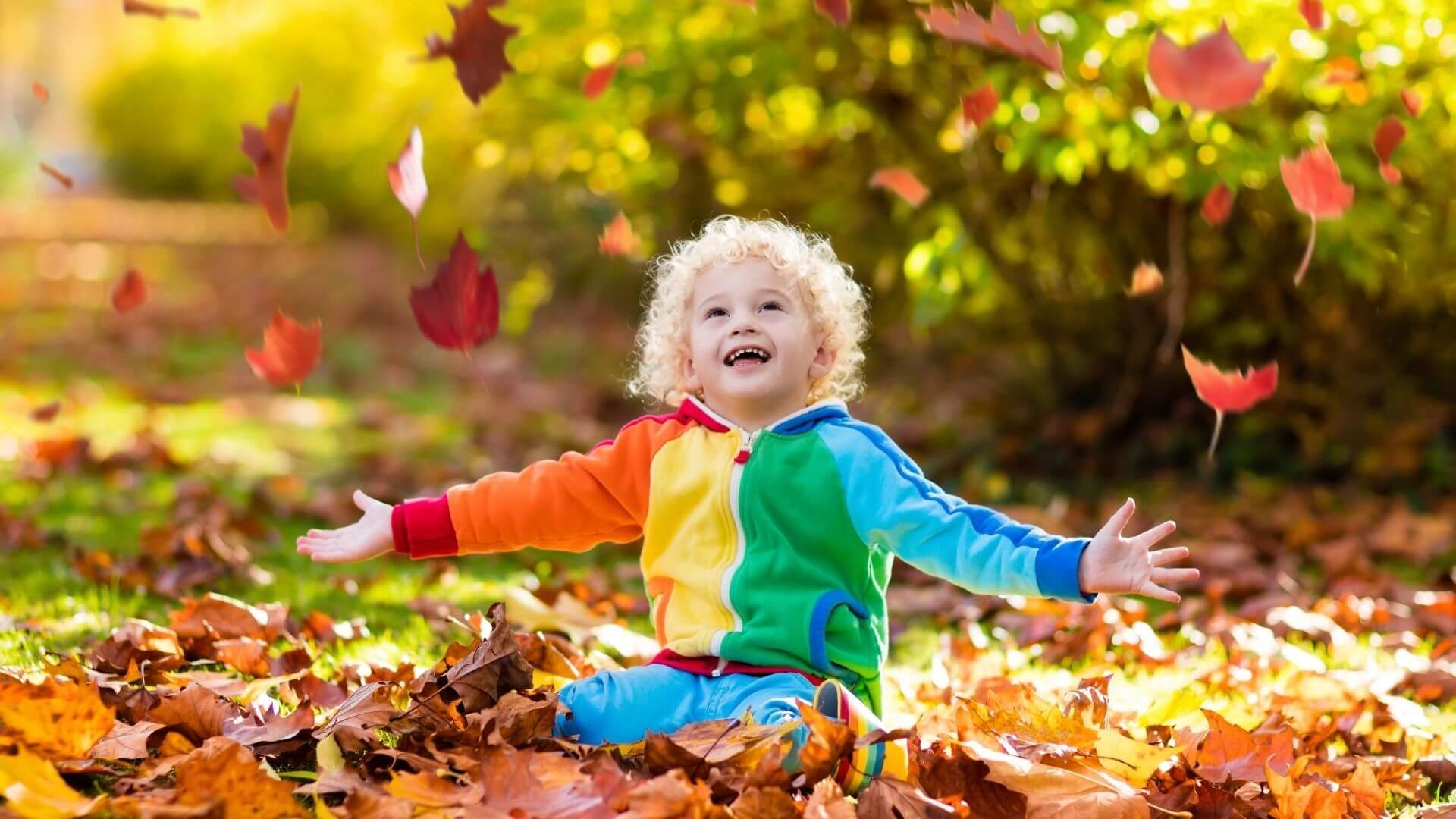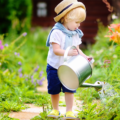Just like us, plants need food and water to survive. Did you know that trees can make their own food? Yes, that’s right. Trees produce their food from sunlight, using a green-colored pigment called chlorophyll.
Contents
Chlorophyll transforms sunlight into food through a process called ‘photosynthesis‘. It is chlorophyll that makes leaves green. In the fall, leaves start turning into beautiful yellow and orange shades, and many trees even shed their leaves, leaving behind leaf scars.
If your kids are anything like mine, you might have faced a barrage of questions about the fall. Why do leaves change color in the fall? Why do plants shed leaves in the fall? Why do some trees not change color? All these, and possibly more!
As parents, we need to be prepared to answer these questions! And more importantly, we should answer them in a fun way, so that our children can remember the answers for a long time.
So in this article, I will show you some fun experiments that we can do at home that demonstrate these principles. I hope you will have as much fun doing them with your kids as I have had! But first, let me answer some basic questions.

Why Do Leaves Change Color In The Fall?
Plants have a variety of chemicals known as ‘pigments’ in their leaves. All plants have chlorophyll, which helps to make food, but there are other pigments as well. In sunflower plants, the presence of ‘carotenoids‘ produces bright yellow-orange colors. ‘Anthocyanins‘ are responsible for the pink-red colors of some other plants.
In the fall, the length of the day starts reducing, and temperatures fall. The amount of sunlight decreases as the days get shorter. And without enough sunshine, the trees stop making food and no longer produce chlorophyll.
Instead, chlorophyll gets broken down into smaller elements. In the absence of chlorophyll, the other pigments start showing their colors.
That is why you get to see the beautiful yellow, pink, red, or even purple shades in the fall.
How Long Do Leaves Take To Change Color?
It depends on the species of the tree. Some trees change their colors in the early fall, whereas others don’t change color until October. On the edges of woods, you will find orange & red-colored maple leaves. In the mountains, you see more yellow & golden brown-colored leaves of oak trees.
Which Trees Change Colors First?
Black tupelo is one of the trees to change its color first. During the summer, the leaves are dark green with a glossy appearance.
However, fall foliage is one of the spectacular characteristics of this tree. You can see orange, yellow, and even purple leaves on the same branch.
Why Do Trees Shed Leaves?
Other changes also happen when the fall foliage appears. A layer of cells develops at the point where the leaf stem connects to the tree.
These cells gradually cut off the tissues that were supporting the leaf. The tree seals this cut to protect itself from losing too much moisture. This is why when the leaf finally blows away with the wind, you can see a leaf scar.
In more northern latitudes, you can expect fall foliage in the mid of October. Leaves start falling off either early or late October, about a week after peak color.
In the northeast, you can expect peak leaf color around mid-October. Some tree species, like beeches and oaks, retain their leaves longer than the rest.
Not all trees lose leaves. Pines, firs, hemlocks, cedars (all the conifers) are evergreen. Their needle-like leaves are green all year round.
Now, I will explain some fun DIY experiments that help you explain these concepts to your young ones.
Experiment 1: Combining Colors
Combining colors is a straightforward experiment that uses ingredients that are already available in your home.
What You Will Need
- Black water-dissolvable markers (a temporary marker will do)
- Water in a large glass
- White paper towels cut into 1-inch strips.
You can use an eye-dropper or sprayer to make it more exciting and add creativity to the activity.
The time required: 30 minutes.
Step-By-Step Guidelines
- On a piece of paper towel, ask the kids to make designs with the black marker. You can ask, “What is the color of the marker” or “What will occur when water touches the black marker?”
- Pierce the paper towel with a pencil. Encourage the kids to participate in the activity.
- Suspend the pencil across the glass so that the lower part of your strips of paper towel touch the water.
- Make use of dark markers (or test with other shaded markers) to repeat the examination using a glass filled with water each time.
- Observe the flow of water as it gradually passes through the paper towel utilizing a force called capillary action.
- As the water travels through the marker ink, you will find that it deposits and pigments up the towel.
- Once the pigments get deposited, you can see the different colors blended to form the black ink. Kids will love to know how the color-changing occurs.
What Will You Get?
You will get a fantastic piece of craft. It is an experiment suitable for both preschool and junior school kids. You can do this experiment in the early fall or late summer or just before the leaves start falling off. You can introduce the concept of photosynthesis, chlorophyll, or chromatography.
Experiment 2: Filtering Colors
This experiment is very simple, and you likely already have everything you need.
What You Will Need
- Leaves
- Containers with lids (or plastic covers will work if you don’t have lids)
- Rubbing alcohol
- Spread blade (or other things that can ‘crush leaves’)
- Large dish or bowl that fits the containers
- Lukewarm water
- Espresso filters
- Glass plates
- Scissors
The time required: 2 ½ hours.
Step-By-Step Guidelines
- Start by heading outside and gathering leaves. Even better, send the kids out to find different kinds of leaves. You’d be surprised by the variety that they come back with. Pick ones that are in their early phases of fall colors for better results. You can choose four to five types of leaves.
- Take one container for each type of leaf that you collected. Start ripping up one kind of leaf in each jar. You need to tear up the leaves into small pieces. Ask the kids to join you.
- Pour in an adequate quantity of scouring liquor to cover the leaves. You can use a blade or other tools to crush up the leaves into the liquid.
- Observe as the liquor color changes to green.
- Set the containers in large bowls or dishes. You can ask questions like, “Why do you think the liquor color changed?”
- Add lukewarm water to the bowl or dish and cover the containers with lids or plastic wraps.
- Get the containers squished to help discharge the chlorophyll. Your liquor should turn a rich green color. You can likewise refresh the hot water if it gets cooled.
- Cut an espresso filter into quarters and place it on a plate.
- Use a teaspoon or dropper and add two or three drops of the fluid to the tip of the filter.
- Wait for 30 minutes to one hour to find how the color changes.
As the liquor passes through the coffee filter, you will observe gradual changes in the liquor’s color. It will no longer remain green. If you wait for longer, you will be able to see bold and darker colors.
Experiment 3
Your kids are going to love this simple experiment as they can perform most of it themselves.
What You Will Need
It is a simple experiment that requires essential ingredients.
- Green sugar or green sand (to make your own, rub green chalk into sugar or sand on a paper plate)
- A paintbrush
- A large tray
- Different colored leaves arranged in groups (green/yellow/red/orange leaves).
Step-By-Step Guidelines
- Set all the leaves on a plastic tray. You can ask your kids to help you place the leaves.
- Take the large tray, place the leaves on the tray, and cover the leaves with sand.
- Let it rest for a few days.
- Ask your kids to remove the sand using the brush. They can observe that the leaves are not green anymore.
- Since the sand is green-colored, you can contrast sand with chlorophyll.
- Brush it off and tell them that chlorophyll breaks down without sunlight and the leaves change their colors in the fall.
It is a simple yet fun-filled activity. It will keep the kids engaged and they will love to garner multiple colored leaves.
Final Thoughts
I hope your kids will love these experiments as much as mine did. Scientific principles are easy to relate to the real world, and they never cease to amaze children.
Try these simple and exciting experiments with your little ones, involve them, and introduce them to the magic of science.
As a parent of a five-year-old inquisitive boy, I have gained a lot of experience finding fun activities and toys to help him understand science and understanding our world in general. On this blog, you’ll find an extensive amount of tutorials, guides, and toys about Science, Technology, Engineering, and Math based on my personal experience to help your child develop critical STEM skills.






